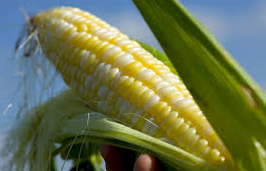Market Commentary from Kottke Commodities – Commodity Capital CTA – Kenneth Stein
Between late June and end-July, U.S. agricultural prices traced an extraordinarily wide and rapid boom-and-bust, wild even for futures markets.

The managers felt well-positioned in corn bullspreads, which did little despite the sharp changes in expectations for supply tightness; apparently it all occurred so fast that the commercial grain business was too frozen to assess and re-position. As December corn rose 90c per bushel in reaction to widespread flooding east of the Mississippi River, and then, après deluge, abruptly fell back 75c, the December-March spread narrowed only a scant 2c and then reversed by as much. The result was a crummy month for us.
In the wake of such spectacular gyration the market is left with relatively high national crop ratings, but justifiable doubts as to how much acreage is drowned out and how greatly washed-away nutrients will reduce yield, versus the positive effect of beneficial rains elsewhere. In 1993, substantial reduction of crop yields by Iowa floods went undiscounted until post-harvest, and indeed this year many analysts continue to forecast a high “trend” yield while others predict slightly sub-par.
While not arithmetically great, this difference of opinion translates into major price uncertainty. In the coming crop year, a small difference makes a big difference: Despite record-high corn yields last fall, this year’s remainder – the “carryout” and percentage of use it represents – is on the cusp of tight. A one-percent reduction in yield – and the standard error of prediction is many times that on Aug. 1 – would raise prices sharply in order to reduce demand.
So why is the market so blasé in the face of such risk? The newswires daily discuss commodity deflation, reduced economic growth in China, austerity, but these things apply far less to trade in food than other “commodities.” There is, in fact, solid indication that world food commerce will expand not just smartly but at an accelerated pace in the next few years. The reality is that, should the U.S. corn supply tighten, there is more volume than ever available from competing exporters.
It’s accurate to say that the shrinkage of U.S. presence in world corn trade is by design: The federal ethanol mandate took so much U.S. corn off the market that it begged for alternative suppliers and signaled long-time U.S. customers to seek them out. Indeed, when the loss of U.S. export business was pointed out as a negative consequence of “biofuels” mandates, one of the Senators representing Iowa, which receives the lion’s share of federal subsidies, stated that this country “should not be exporting corn.”
For foreign customers, depending on non-U.S. suppliers for grains and oilseeds carries additional logistical, financial, and security risk – things we have been wary of but haven’t backfired on buyers this year. Yet they haven’t disappeared or even eased. While Russia remains under financial sanctions it nevertheless continues to destabilize Ukraine and sell wheat far under futures prices, underpricing its goods. Argentina will hold Presidential elections in the fall, holding out hope for change of distorted agricultural subsidies, but it must be remembered that the outgoing Peronist regime won the last one by a landslide. Brazil may be about to lose its investment-quality credit rating, a downgrade with serious repercussions for international business.
Actually – and again, contrary to what I expected – as these countries’ problems became even more serious, their trade has actually grown. Their currency weakness effected big price increases to farmers in local terms. Unlike most devaluations, which bring only the illusion of wealth, the concurrent decline in petroleum prices reduces cost of farm production and transportation. So far, these tenuously-underpinned grain exporters have held and expanded their market share.
Thus the U.S. enters the new 2015-16 market year with far smaller outstanding sales of major ag commodities than in recent years. We expect substantial business to return to the U.S. in the next six months, opening up trading opportunities.
